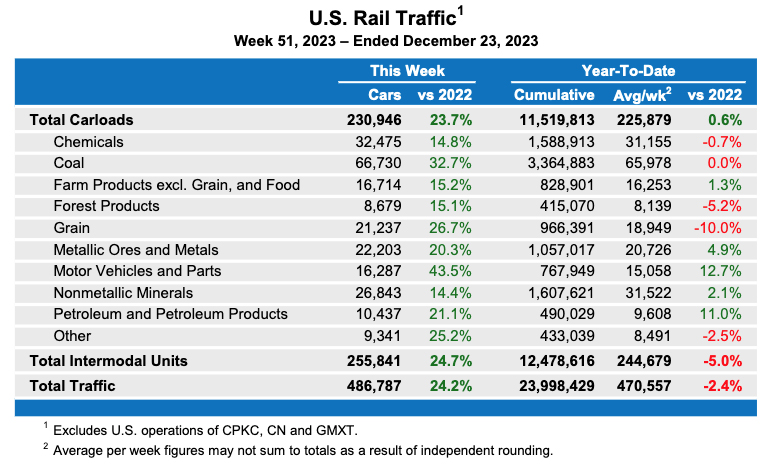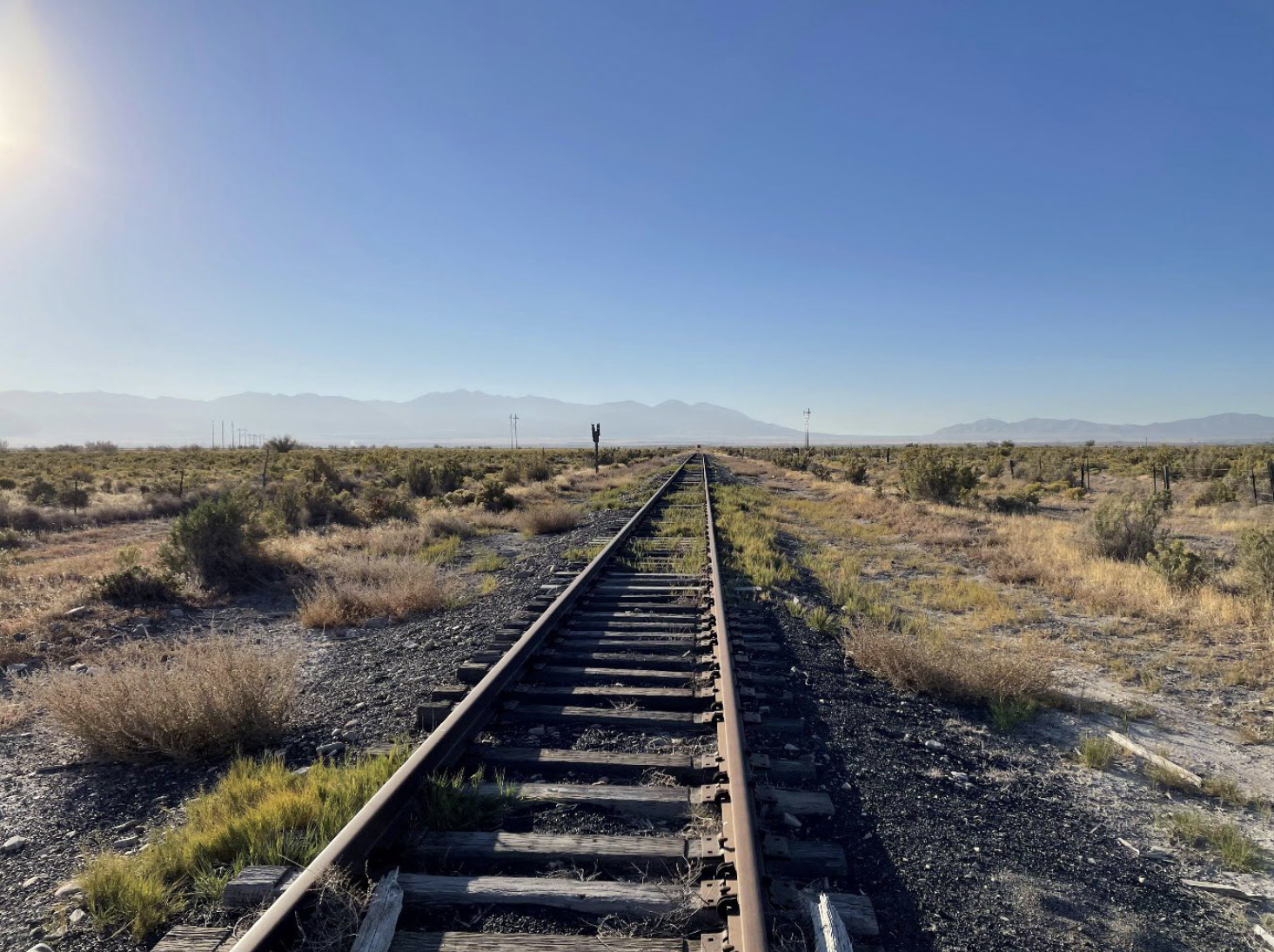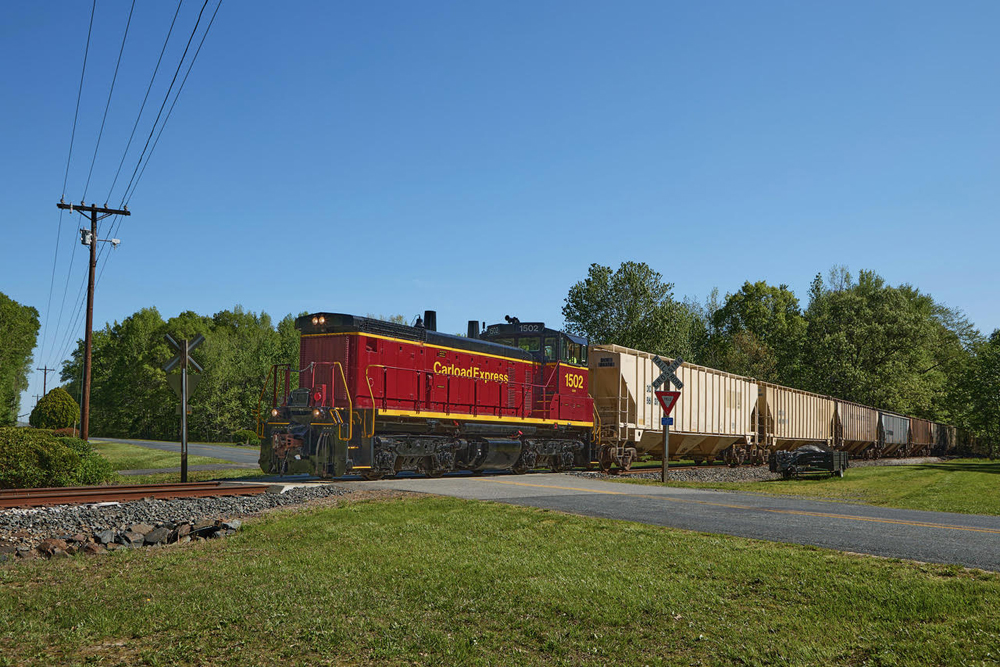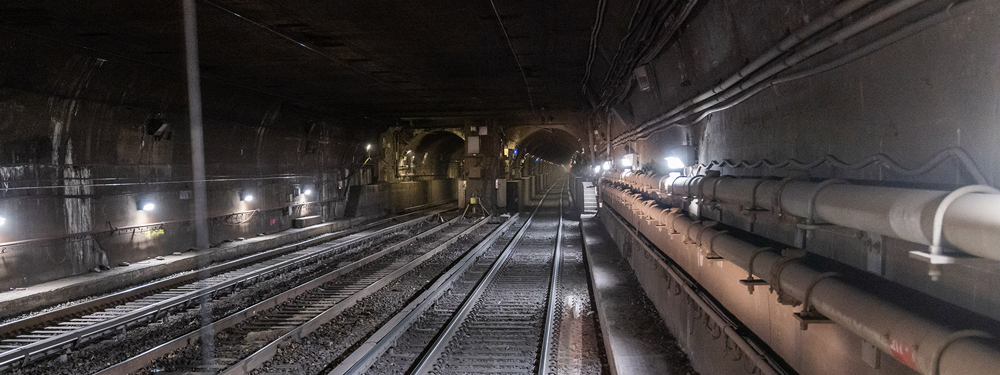
WASHINGTON — U.S. rail traffic continued its year-end surge, with traffic for the week ending Dec. 23 up 24.2% over the same week in 2022.
According to statistics from the Association of American Railroads, traffic for the week was 486,787 carloads and intermodal units. That included 230,946 carloads, up 23.7%, and 255,841 containers and trailers, up 24.7%. The total marked the seventh straight week traffic has been ahead of 2022 levels.
Week 51 figures for 2022 included total volume of 400,289 carloads and intermodal units, with 191,195 carloads, and 207,094 trailers containers [see “U.S. rail traffic remains down …,” Trains News Wire, Dec. 29, 2022].
Year-to-date statistics, through 51 weeks of 2023, remain behind 2022 levels, but the margin is decreasing. Carload traffic is up 0.6% and intermodal traffic is down 5%, for an overall decrease of 2.4% compared to the same period a year ago.
North American volume, based on reports from 12 U.S., Canadian, and Mexican railroads, included 350,069 carloads, up 21.4%, and 337,542 intermodal units, up 25.3% over the same week in 2022. The combined total of 677,611 carloads and intermodal units is a 23.3% increase. North American year-to-date totals through 51 weeks show a 2.2% decline compared to the same period in 2022.














Woo-hoo! Rail traffic in late 2023 finally beat the YOY comps to the pathetic end of 2022. Go take a deeper look at the stats for 2020, 2021, 2022, and 2023 at AAR’s rail traffic data website. Other than traffic levels finally rising out of the pit of early 2023 there’s not much to celebrate. The big question is whether this sad state of affairs is being driven primarily by macro-economics or by long term poor PSR rail service which only superficially “improved” in 2023 because traffic levels were depressed for most of the year. Back in 2014 and 2018 railroads struggled to move peak amounts of traffic. Post-industry wide adoption of PSR, they are struggling to move average traffic volumes.
I don’t remember seeing every weekly line green before, but a 2.2% decline for the whole year is still a problem.